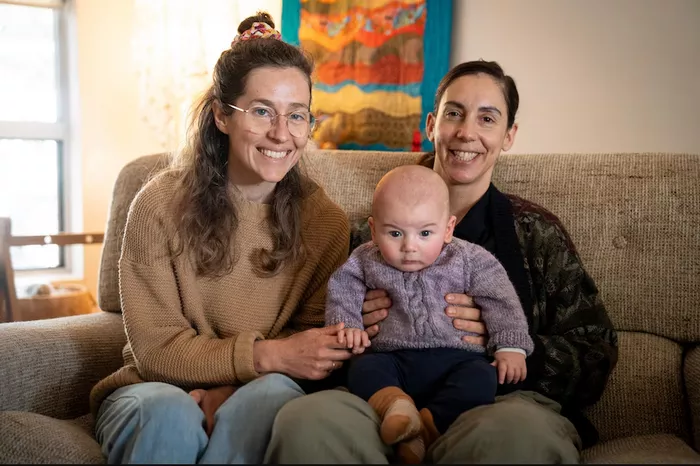In February, Thea Saliba gave birth to her first child at home in a small pool in her kitchen. Her cat Scout watched peacefully, and no doctor was present.
Thea, a midwife herself, considered giving birth at Alice Springs Hospital where she works. Her partner Kaitlyn was initially hesitant about a homebirth due to concerns about risk.
“I was unsure about it because I’m very opposed to risk,” Kaitlyn said.
Four months after their son Bodhi’s birth, the couple is happy with their decision.
Thea and Kaitlyn are part of a growing trend in the Northern Territory, where more people are choosing homebirths through the NT’s publicly funded homebirth program.
The program provides couples with two specialized midwives who support them throughout pregnancy and assist with the birth.
“It was unparalleled as a life experience,” Thea said. “It was important to me to have a natural labor and birth in a safe and comfortable environment.”
Launched two decades ago, the NT’s homebirth program is one of the longest-running in Australia. Recent data shows that the NT has the highest proportion of homebirths in the country, with 1.2% of babies born at home, compared to the national average of 0.5%.
Kathy Colbert, a specialized midwife, manages the increasing demand for the NT’s homebirth program. She is on call day and night, ready to assist with births.
“We quietly enter the room, bring necessary equipment, and set up to the side,” she said. “If any complications arise, we’re there to help. But most women who birth at home catch their own babies.”
Kathy has assisted hundreds of births in various locations. “It’s an empowering thing to do and sets people up for parenthood,” she said.
The program excludes high-risk pregnancies and is only available in Alice Springs and Darwin. Despite this, demand continues to rise. Last year, midwives assisted 38 births in Darwin and 10 in Alice Springs, the highest numbers since the program began in 2004. This year, 22 births have occurred in Darwin and four in Alice Springs so far.
Homebirths are gaining popularity but are not yet mainstream. In 2021, nearly 97% of women in Australia gave birth in hospitals.
Vanessa Bakker, clinical midwife manager at Royal Darwin Hospital, hopes this changes. She noted that up to one in three women in Australia experience birth trauma. A recent NSW inquiry recommended expanding homebirth options to improve birth experiences.
“Women who birth at home are less likely to have interventions,” Vanessa said. “They build a relationship with their midwives, leading to lower rates of episiotomies, C-sections, postnatal depression, and higher breastfeeding rates.”
Hazel Keedle, a senior lecturer in midwifery at Western Sydney University, also supports homebirths but emphasizes the need for safe homes and proximity to hospitals in emergencies. She pointed out that homebirths are more cost-effective and less wasteful than hospital births.
“Hospital births are expensive with more interventions and services,” she said. “Homebirth costs are absorbed into the home environment.”


